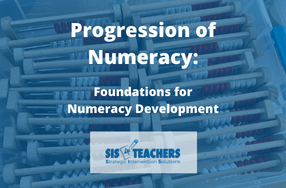To say “back to school” will look a little different this year, might be an understatement! Across the country, schools are working with a tornado of different ideas and plans, some of which have yet to be solidified even today!
Some schools are going to be in-person. Some schools are going to be fully online. Some schools are going to have a hybrid option, with different groups that take turns throughout the week with a completely online day somewhere in between.

The hardest part of this, as a teacher, is the unknown, the uncertainty. We always plan for our school year – we set up our classrooms, we put name tags on desks in anticipation of eager young faces filling our classrooms, we prepare frantically for open house. We’ve always been able to prepare, even if it feels a bit chaotic leading up to that first day!
But now, we can’t. We don’t know what to expect. If we knew what to expect, we could prepare and thrive. When life came to a screeching halt in March, we weren’t really prepared. I think most of us thought we’d be approaching this school year at least a few steps ahead of the game, but the unknowns are still there.
As we start the school year with this kind of uncertainty, I’d like to encourage you! Yes, everything is crazy, but if you think about it, usually about 10% of the current chaos is what is actually happening. The other 90%? It comes from how we react to it!
Students want to be back in their classrooms. Students are craving the structure of school in their lives once again. So, while our stress levels may be high, how we react to the situations we face, and will face this fall, will ultimately affect our students’ perception of the events taking place.
As educators, we have a passion for doing the best job we can to educate our students. And so, we naturally put a lot of stress on ourselves to make this happen. But as you think about this school year about to start, wherever you are, know that you can do this! You’ve got this. Will our lives and schools be forever changed because of COVID? Absolutely, but it isn’t going to be like this forever! And the way we react and the way we prepare is what will help get us through.
Math in the Time of COVID
B.C. (before COVID), you’d probably have your classroom perfectly planned, and at least mostly ready by now! Because we are facing a different set of concerns this year, I wanted to give you some tips for helping you keep the quality of your math instruction high, even as contact with students is going to be low.
Math Manipulatives
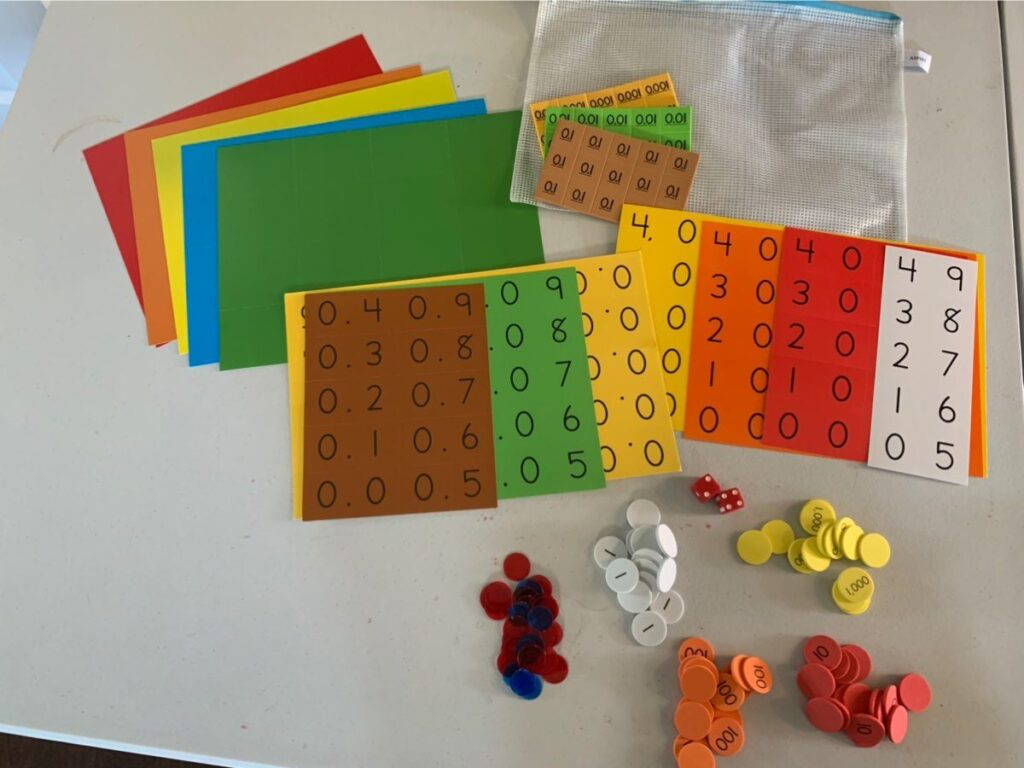
We all know the power of manipulatives for helping students develop a concrete understanding of a strategy. The schools we work with in Michigan religiously use their Math Salad Bars, those multi-drawer units that house the manipulatives needed for the current math unit. However, we also know how many kids touch those things on a daily basis! Who has time to wash those individual unifix cubes after each student uses them?
Instead, try a Portable Math Salad Bar! Gather only the essential tools, the most universal manipulatives, that a student might need and place them in bags, labelled for individual use only. Some teachers used dollar store plastic tubs and numbered them. You can get as creative as you want!
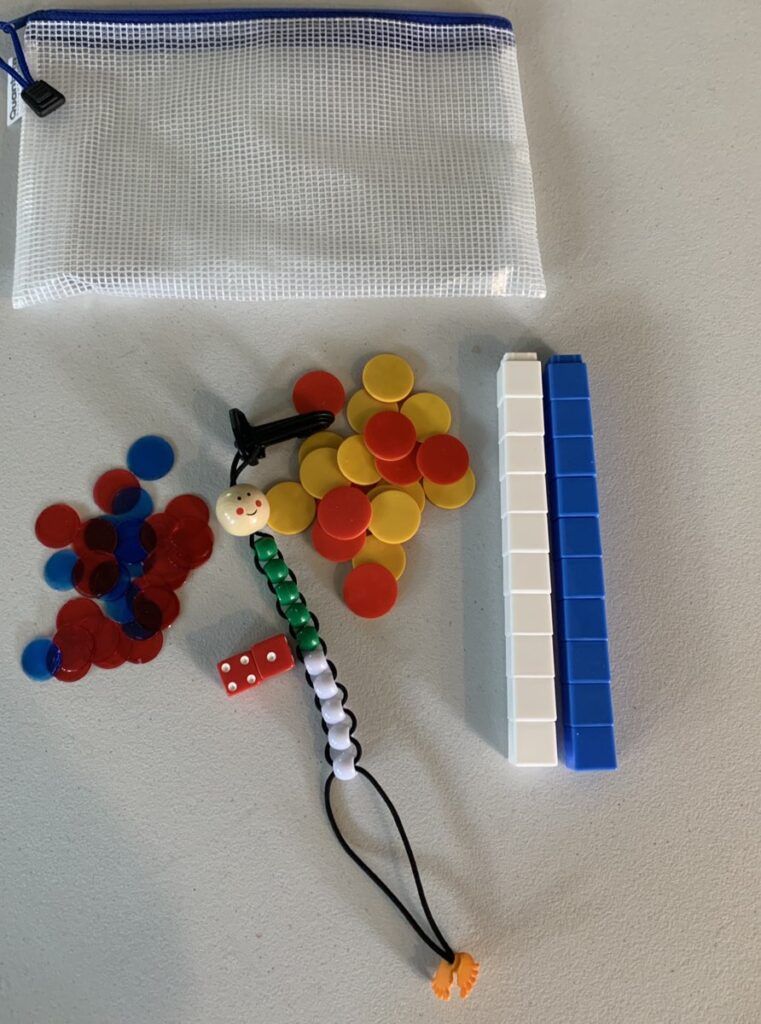
This idea works regardless of whether you are going back in-person or virtually. In school, students can grab their own bag and they are the only person touching those particular manipulatives. Even if they’re playing a game with another student, they’ll have their own counters to use, and the other student will have his or her own. They’ll each have their own set of dice to roll, and so you can continue using mathematical centers in a safer manner that minimizes contact.
If your students are virtual, they can have their bag of manipulatives with them and still participate if they’re on a video call. For example, we have a whole new series of place value basics activities (Check them out in our store!) that includes a presentation that shows students exactly how to manipulate their place value strips. They can do the activities right along with you and they can show you their work to demonstrate their understanding. Students can also continue to practice math concepts by playing games with their family.
A few ideas/suggestions to include in a Portable Math Salad Bar:
- Younger grades – Include unifix cubes, two sets of 10 clear counters (each a different color)
- 2nd grade – We included a small set of place value strips with whole numbers, and enough place value discs for students to have a variety available for different lessons that they would be using with their teacher.
- 5th grade – We included decimal tiles and decimal discs, along with other basic manipulatives like counters and dice.
Virtual manipulatives are also a viable option, and I’m a huge fan of using those, but we know that nothing can replace that hands-on experience and exploration which is so vital for kids in elementary school and their success in numeracy and number sense.
Show What They Know with Accountability Sheets

There are a million different apps and tools where kids can show you their work (personally, I love SeeSaw because it’s such a simple tool!). Adding the element of an accountability sheet to a game that students are playing gives you extra insight into how they are processing and learning. This works well when you don’t have the opportunity to watch every student playing every game – either in a traditional classroom setting or a virtual setting.
Last fall, I was in a kindergarten classroom where a group of 5-year-olds was playing Deck o’ Dots Train completely independently in a station. They played the game, filled out the accountability sheet, and one of them walked over to grab an iPad. When I asked what they were doing, they casually told me they just needed to upload a picture for our accountability so our teachers knows that we played the game and what math we were doing. I was blown away!
Being able to see students’ work is vital, whether you are face-to-face or virtual, because that’s how we can make connections and informally assess their progress. Most of the games we feature on our website include an accountability sheet, so check them out, and think about how you can use your current virtual learning platform, or implement a third-party platform like SeeSaw, so you can get this glimpse into your students’ thinking.
Get your PD Virtually!
Back to school looks different for SIS4Teachers too! We’re used to being with you in-person, coaching and providing resources face-to-face! So, all summer, we’ve been working hard to bring you a membership website that provides the professional development and resources you need, regardless of your back-to-school situation. The result: M3 – Molding Math Mindsets – Membership!
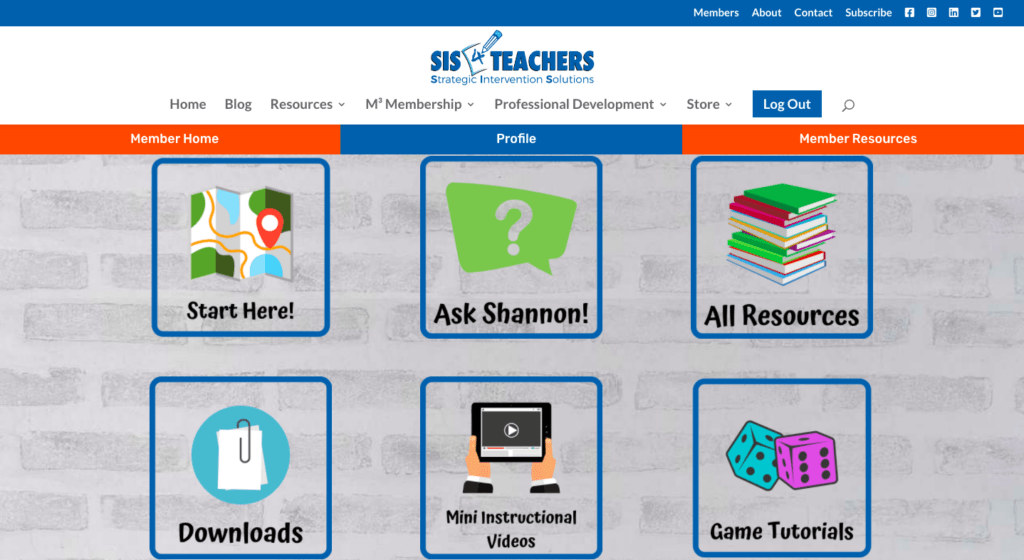
Our membership site has several areas that you’re going to love as you go back to school this year.
Tutorial Videos for all the things you’re teaching this first quarter! If you’re teaching place value, we have a series of activities and games that are ready for you to use, plus tutorial videos that you can use for professional development – all at your fingertips!
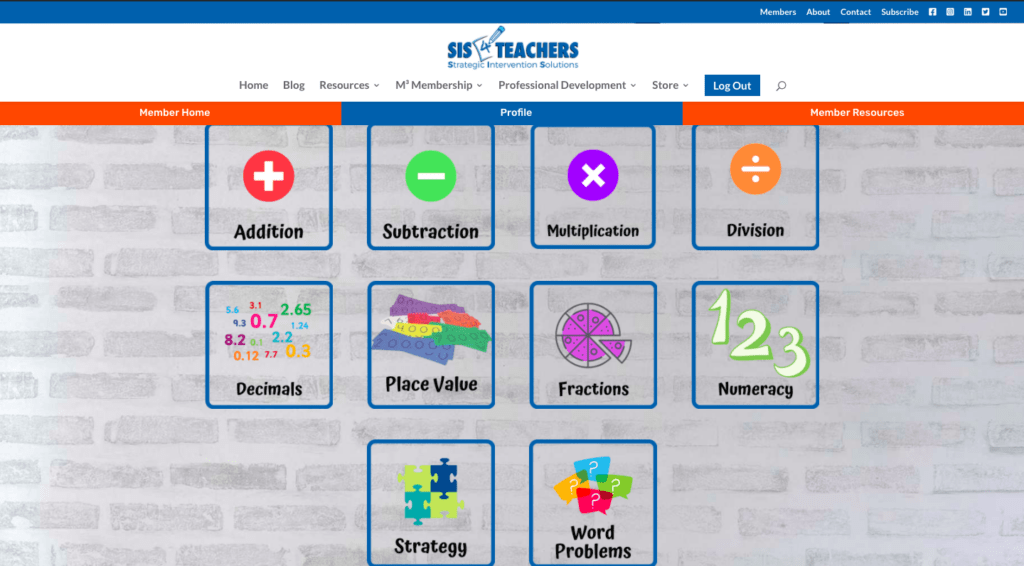
Visual Models is another series I just was recently working on that you can use to help students, either remotely or in school, understand the different types of visual models there might be for word problems. This series includes specific video tutorials and student journals that they can either do at home, or with you in class to show that they understand that process and can apply it with other word problems that you give them. There’s also a ready-to-use PowerPoint presentation that walks you through the characteristics of the different types of problems like part-whole addition, part-whole subtraction, additive comparison, multiplicative comparison.
How do you keep numeracy talks or number talks going if you’re remote, or if you don’t have all your kids? For preschool through second grade, we have a Numeracy Talks series with different kinds of subitizing activities presented on a PowerPoint that can be used virtually or in school.

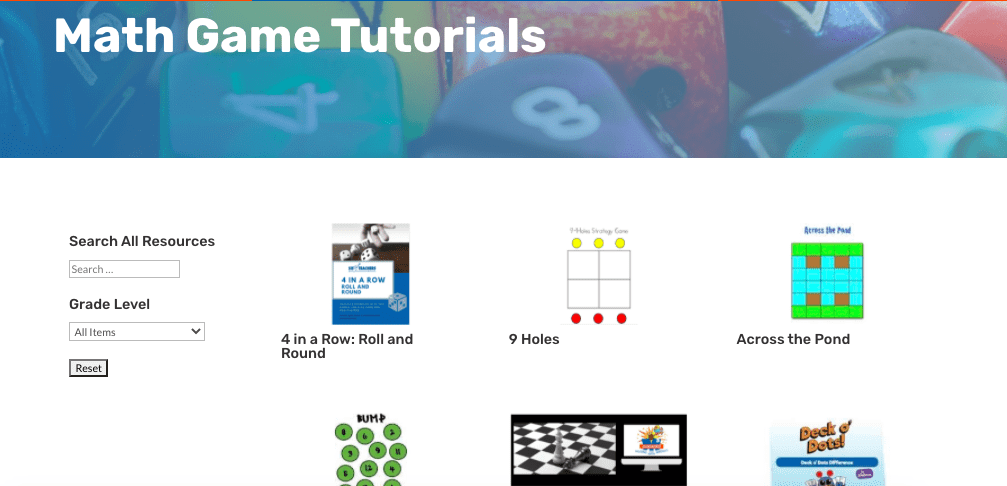
Math game tutorial videos! Most students claim they can learn anything on YouTube, so why not learn math games there too?? We have tutorials for all grade levels! You can filter the collection by grade level, choose a game, and everything you need is there – the video tutorial and any downloads that go with it – game board, accountability sheet, etc. Some of our games just involve cards, some of the games have downloadable components, some of the games are from our friends at k-5mathteachingresources.com.
These videos are great, especially in a hybrid situation. Maybe, you have A day students in class, but the rest of your students can watch at home to learn to play the game, just as if they were in class with you.
Get Virtual Coaching! Maybe the most important part of this membership website is really the community. In our socially-distanced world, we still need each other! We still need support, now more than ever, as we try to educate our students.

You can ask your questions in several formats – I’ll do a live Q&A every month to explain and model questions that are submitted, but you can also fill out a question form in the Ask Shannon section of our website and get immediate feedback. If I can’t be there with you in person, this is the next best thing! I’ll be able to virtually coach you through the school year!
Every quarter, we’ll add new videos and resources to the M3 Membership website based on the standards that you’re teaching in the regular progression of math standards, so you will have the things you need, at your fingertips. And we’ll be with you the whole way!
How much for a year of access to all of these amazing resources? We tried to make it as affordable as possible for a teacher to purchase a membership, either through a district or individually. Find out more or sign up today on our membership page! The preregistration discount ends today, so don’t wait!
So although we don’t have a crystal ball and can’t predict exactly what this 2020-21 school year is going to be like, we do know a few things for sure:
- We still have to go slow to go fast.
- Less is more.
- Our reaction is 90% – and we CAN control that.
- We can do hard things.
- Our students will still get an education.
- Math is still important, and so are you!
We hope that you have a great start to your school year, no matter how it looks.

